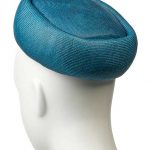Necklaces 1950s. Necklaces during the 1950s were extremely elegant and ranged from beautiful geometric designs to simple pearls. Below are some examples of necklaces from the 1950s including a diamond necklace by Cartier and a pearl necklace.
An impressive diamond necklace, by Cartier, circa 1955 The lattice bib of brilliant and square-cut diamonds, suspending a graduating fringe of pear-shaped diamond drops, each within an openwork brilliant-cut diamond lozenge, diamonds approximately 100.00 carats total, signed Cartier Paris, numbers partially indistinct, maker’s marks, French assay marks, length 36.0cm.
The three largest pear-shaped diamonds each accompanied by certificates from the GIA stating that the diamond weighing 5.56 carats is D colour VS2 clarity, the diamond weighing 6.98 carats is D colour Si1 clarity and the diamond weighing 4.35 carats is D colour Vs clarity. Certificate numbers 15724280, 15724284, 15724286, dated 22nd February 2007.
This spectacular diamond necklace by Cartier, circa 1955, perfectly encapsulates the flamboyance of the post-war period when fashion turned its back on the austerity and deprivations of the war years. Set with approximately one hundred carats of diamonds, the fringe of diamond drops is designed to sit on the collarbone and would have perfectly complemented the glamorous `New Look` evening gowns of the 1950s, which were draped in luxurious fabrics, with low décolletés and tightly corseted waists.
It formed part of the collection of Anne Moen Bullitt, a wealthy beauty whose wardrobe, once described as “an amazing collection from the golden age of couture”, perfectly matched her society lifestyle.
Anne’s father was William Christian Bullitt, the American millionaire diplomat, journalist and novelist. Her mother, who died when she was eight, was Louise Bryant, an American journalist and radical who counted Eugene O’Neill and F. Scott Fitzgerald as friends and who was part of the Parisian ex-patriot set of the 1920s.
Sold for £ 602,400 inc. premiumCITRINE AND DIAMOND NECKLACE AND RING SET, STERLÉ Oval-shaped citrines, old and single-cut diamonds, gold (French marks), 1950s, necklace 40.0 cm, ring size 5 ½, signed Sterlé Paris, nos. 3212 (necklace) and 9104 (ring)
Sold for CHF 68,750 at Christie’s in 2019
Miriam Haskell Yellow Bead Pendant Choker Necklace American, 1950s American, 1950s Of yellow glass beads and square cut white strass set in gilt-metal filigree, the necklace of round segments supporting four-part drops half way around, marked: Miriam Haskell..
Sold for $2,000 (includes buyer’s premium) at Doyle New York in 2002
Monet C 1950s Gilt Brass Egyptian Collar Necklace. Monet circa 1950s elaborate gilt brass reeded bead Egyptian collar design necklace. Hallmarked on clasp. Measures approximately 13 inches in length.
Sold for $100 at Greenwich Auction in 2019
Diamond necklace, 1950s Of swag design set with brilliant-cut and baguette diamonds, length approximately 405mm.
Sold for 32,500 CHF at Sotheby’s in 2019
Estate 1950’s 14kt WG, Diamond and Pearl Necklace
Sold for $2,300 at Bruce Kodner Galleries in 2019
[geolocator_show for=”GB”][ebayfeedsforwordpress feed=”http://rest.ebay.com/epn/v1/find/item.rss?keyword=necklace+1950s&sortOrder=BestMatch&programid=15&campaignid=5338620289&toolid=10039&customid=pastimefashions-rss-uk-necklaces-1950s&minPrice=100.0&listingType1=All&feedType=rss&lgeo=1″ items=”20″][/geolocator_show]
[geolocator_hide for=”GB”][ebayfeedsforwordpress feed=”http://rest.ebay.com/epn/v1/find/item.rss?keyword=necklace+1950s&sortOrder=BestMatch&programid=1&campaignid=5338620289&toolid=10039&customid=pastimefashions-rss-us-necklaces-1950s&minPrice=100.0&listingType1=All&feedType=rss&lgeo=1″ items=”20″][/geolocator_hide]







